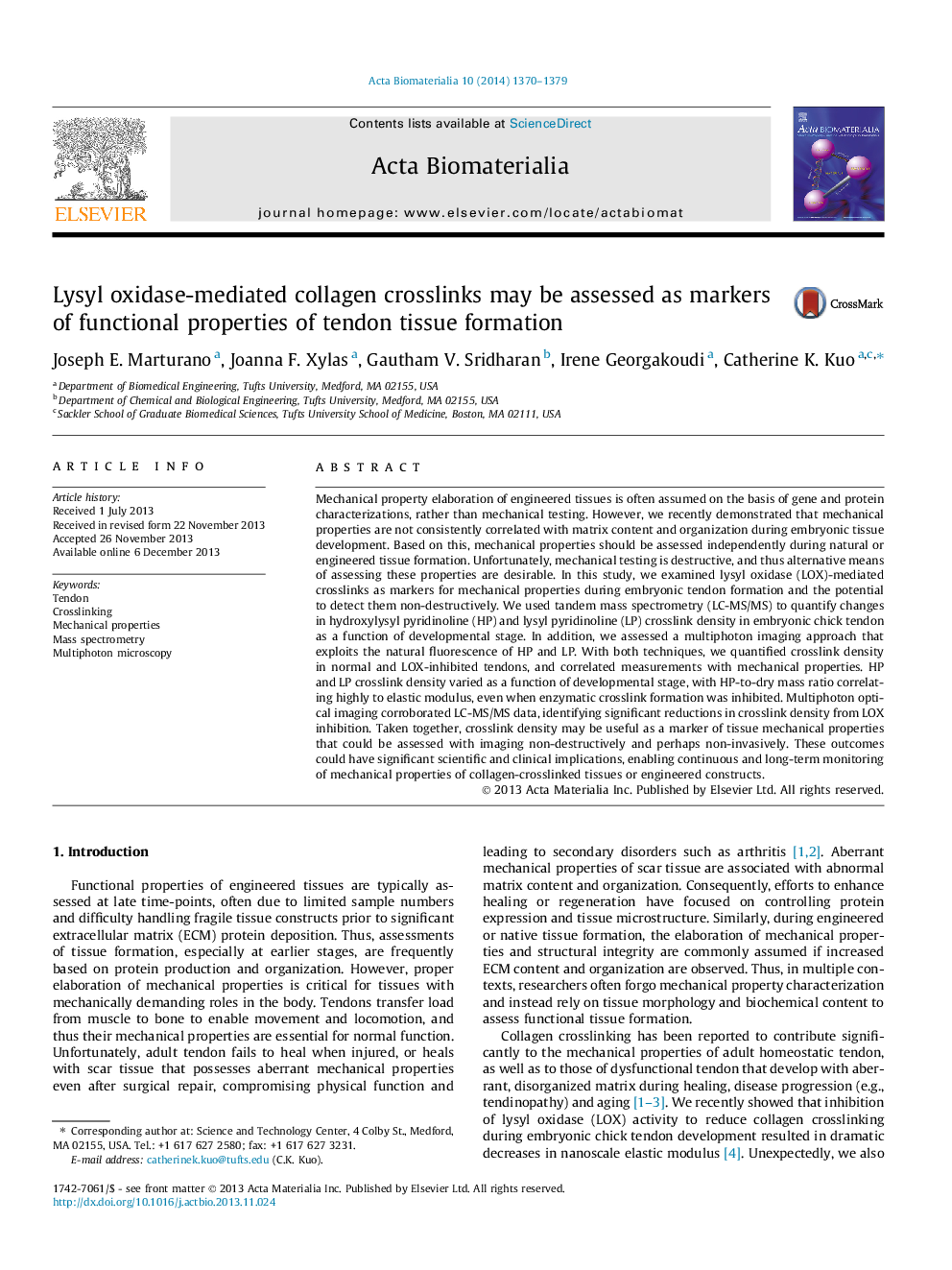| کد مقاله | کد نشریه | سال انتشار | مقاله انگلیسی | نسخه تمام متن |
|---|---|---|---|---|
| 10159291 | 41 | 2014 | 10 صفحه PDF | دانلود رایگان |
عنوان انگلیسی مقاله ISI
Lysyl oxidase-mediated collagen crosslinks may be assessed as markers of functional properties of tendon tissue formation
ترجمه فارسی عنوان
به عنوان نشانگرهای خواص عملکردی تشکیل بافت تاندون، می توان از کریستالین های کلاژن متصل به لیسیل اکسیداز ارزیابی شد
دانلود مقاله + سفارش ترجمه
دانلود مقاله ISI انگلیسی
رایگان برای ایرانیان
کلمات کلیدی
موضوعات مرتبط
مهندسی و علوم پایه
مهندسی شیمی
بیو مهندسی (مهندسی زیستی)
چکیده انگلیسی
Mechanical property elaboration of engineered tissues is often assumed on the basis of gene and protein characterizations, rather than mechanical testing. However, we recently demonstrated that mechanical properties are not consistently correlated with matrix content and organization during embryonic tissue development. Based on this, mechanical properties should be assessed independently during natural or engineered tissue formation. Unfortunately, mechanical testing is destructive, and thus alternative means of assessing these properties are desirable. In this study, we examined lysyl oxidase (LOX)-mediated crosslinks as markers for mechanical properties during embryonic tendon formation and the potential to detect them non-destructively. We used tandem mass spectrometry (LC-MS/MS) to quantify changes in hydroxylysyl pyridinoline (HP) and lysyl pyridinoline (LP) crosslink density in embryonic chick tendon as a function of developmental stage. In addition, we assessed a multiphoton imaging approach that exploits the natural fluorescence of HP and LP. With both techniques, we quantified crosslink density in normal and LOX-inhibited tendons, and correlated measurements with mechanical properties. HP and LP crosslink density varied as a function of developmental stage, with HP-to-dry mass ratio correlating highly to elastic modulus, even when enzymatic crosslink formation was inhibited. Multiphoton optical imaging corroborated LC-MS/MS data, identifying significant reductions in crosslink density from LOX inhibition. Taken together, crosslink density may be useful as a marker of tissue mechanical properties that could be assessed with imaging non-destructively and perhaps non-invasively. These outcomes could have significant scientific and clinical implications, enabling continuous and long-term monitoring of mechanical properties of collagen-crosslinked tissues or engineered constructs.
ناشر
Database: Elsevier - ScienceDirect (ساینس دایرکت)
Journal: Acta Biomaterialia - Volume 10, Issue 3, March 2014, Pages 1370-1379
Journal: Acta Biomaterialia - Volume 10, Issue 3, March 2014, Pages 1370-1379
نویسندگان
Joseph E. Marturano, Joanna F. Xylas, Gautham V. Sridharan, Irene Georgakoudi, Catherine K. Kuo,
